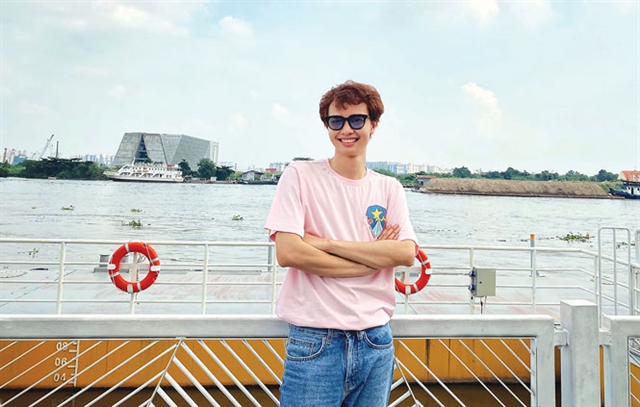[ad_1]

Hồi Hải Mã (Hippocampus) is an art project named after a part of the brain for school students to learn about and practice different types of painting, from traditional lacquer, oil painting, silk, to graphic painting.
Run by young painter Đặng Việt Linh, the project also includes talks about creative methods that can include the Vietnamese signature. The 28-year-old painter talks with Thúy Đinh of Hà Nội Mới (New Hà Nội) newspaper about his project
Several talented painters have joined ‘Hippocampus’ which was launched at the end of 2019. Can you reveal more about the project?
The project consists of different courses. Specifically, for the lacquer painting courses, we invited painters Nguyễn Tuấn Anh and Triệu Khắc Tiến to talk about traditional lacquer so the young students can better understand the difference between Vietnamese lacquer and versions from Japan, South Korea or other Southeast Asian countries. For the graphic painting, we have painters Trương Triều Dương and Vũ Bạch Liên, who share the history of graphic arts and the development of current graphic arts. We also have held courses on oil and silk painting. There were two talks about artistic perceptions to help the young audience understand why an artwork can aid mental wellbeing and also has financial value in the future.
Why does the project target only school students?
The project targets students of secondary and high schools. It’s impossible that all of them will pursue a career in art, but I think once they have been equipped with basic knowledge of art, they can get better acquainted with other cultural values of their home country.
Are art studies effective in a small group of young participants with the guidance and talk of professional artists?
Our intention is that any student joining the project can continue to spread the interest in art to their peers. We set a theme entitled Ký Ức (Memory) for young participants to create their own art pieces which will be displayed at an exhibition in April when the project wraps up.
These special art pieces will be sold for charity. After this exhibition, we will also organise a workshop where the students will be speakers, talking about their firsthand experience of art and painting. Through all those activities, they can find out that art is not only for decoration, but also for community connections and for humane causes.
How were the students selected to participate in this project?
The selection was carried out in several rounds. In the first round, we asked them to send a portfolio of their drawings. A judging panel of experienced artists selected the qualified ones. For every course, we have selected only four or five students because we put quality criteria first. Up to now, after joining the courses, the way they present their artwork is much more incisive.
What motivated you and your partners to launch ‘Hippocampus’?
I feel that there are many shortcomings in the art market. The Vietnamese art market is very limited due to the prevalence of counterfeiting. We need to do something that can help our next generation understand the real value of art. However, we can’t do this in a day, it takes quite a long time.
If I just focused on exhibiting my paintings, maybe I would be known by more people. However, I realised exhibitions are for promoting me only. My wish is to create a community where all members are together to form a background on aesthetics and art for young generations.
You don’t need to have a big budget to implement a project like this. Doing art projects on social media is a very good idea, especially when the budget is limited.
Can you share your ideas after the project will conclude next month?
After wrapping up the project, we will continue to work with these young participants because they already have ideas of what they want to create. Besides, they also have a positive view of art. The follow-up project will focus on promoting the community connecting and pervasiveness. Based on specific details, we will invite the proper artists to be the mentors. VNS
[ad_2]
Source link
